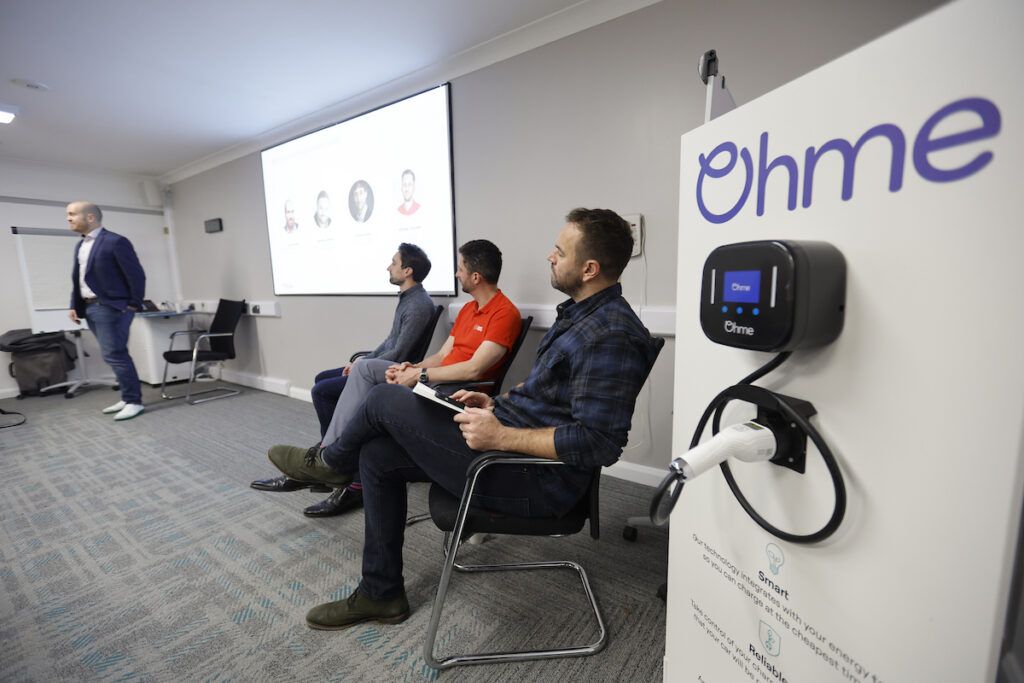Trojan Energy explain the issues around electrical safety and how to ensure safe operations in the cross-pavement EV charging sector.
I’m Sandy Thom, Chief Technical Officer of Trojan Energy. I’m responsible for the overall safe operations of all our systems and solutions, acting as the Design Authority for the business. I also lead the design work for all electrical, electronic and digital components that go into making our patented flat and flush on-street charging.
Earlier in my career, I worked in other safety-critical roles: from designing electronic controls systems in the nuclear industry to becoming a Technical Authority responsible for the safe operations of subsea controls in the North Sea oil & gas industry.
I’m sure I don’t need to dwell on the need for total focus on safety in either nuclear generation or oil & gas production – we’re all well aware of what can happen when protocols aren’t followed – but the same focus must also be present in the electric vehicle charging industry. The UK has some of the most comprehensive and detailed electrical specifications for installation and operation anywhere in the world, but this doesn’t mean they stand still.
They must evolve as usage cases evolve, and in the case of cross-pavement charging solutions, electrical approaches that are compliant in the home are not sufficient when moving that power into the public realm.
There has not been a scenario where electricity is moved from the home into the public domain at a mass market scale before. The regimes for electrical works at home and in public have some significant differences, despite being described in the same standards.
The charging and electrical industries are just now getting to grips with the impact of cross pavement solutions, and the subsequent implications for standards and codes of practice. In public, the responsibility for electrical safety associated with installing public chargers lies with both the local authority and the installer, and this should be no different for charge points used for cross-pavement solutions. Relying on a householder to understand and take on the extra risk associated with their own chosen solution is wrong-headed and will hold back the deployment of a segment that will deliver equal opportunity under the EV transition.
In layman’s terms, the most common earthing arrangement for domestic electricity suppliers in Great Britain is commonly known as “Protective Multiple Earthing”. This covers a number of specific earthing methods but they all essentially use the neutral conductor as the earthing (or “grounding”) path, with it being earthed at multiple points of the circuit from the sub-
station transformer. If this neutral conductor is damaged such that the circuit is broken, a condition known as an Open PEN (Protective Earth Neutral) Fault arises. In this scenario, the risk is that the route to earth from the still-live parts of this circuit is via an adjacent circuit where the path to earth is still intact. A physical separation of 2.5m between adjacent circuits is written into the regulations to ensure a human (who will have an arm span of less than that) cannot bridge the distance and contact both circuits simultaneously.
Where circuits are fixed in place the separation is more straightforward to manage via a risk assessment performed at the time of installation. Where the circuits can “move” such as parking two cars right next to each other and then connecting them to two different EV chargers on different supplies with different earthing systems, then the assessment must consider what could happen in the future in the way that chargers are used, not just how they are installed on the day.
There are devices called open combined protective and neutral conductor detection devices (known as OPDDs) which monitor the mains supply and are capable of detecting such faults. When they do, then all conductors to the circuit (Line, Neutral and Protective Earth) are disconnected. This mitigates the simultaneous contact risk introduced by the Open PEN
fault. Trojan uses these in all Trojan Home charge points.
Recently the IET published guidance outlining requirements for OPDDs. It should be noted the IET01:2024 guidance is not a designated standard, however no such consolidated standard approach or specification for how EV equipment should operate in case an open PEN fault exists. As such we anticipate that this guidance will eventually become a requirement for OPDD devices installed in installations adhering to the BS7671 wiring regulations and the IET Code of Practice for Electric Vehicle Charging Equipment Installation.
We’ve written some documentation and produced a video with help from a number of industry stakeholders to describe how Trojan Energy addresses these risks within the Trojan Home proposition. But it is important to note that safety is never “done”, and we will continue to be an open and willing participant in the conversation, incorporating further developments as and when they become available. Never placing liability for electrical safety onto our customers.
Trojan Energy information on Cross Pavement Charging: Electrical Safety Information








